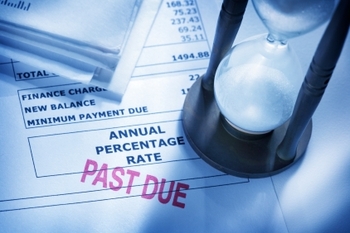
The agency will focus on promoting fairness for both consumers and law-abiding debt collectors.
All debt collectors are not evil. At least, that is what the Consumer Financial Protection Bureau (CFPB) recently emphasized in an annual report sent to Congress. In the report, CFPB points out that debt collection plays an essential role in consumer credit markets. By providing for recovery of unpaid debts and minimizing losses, creditors are able to expand the provision of credit and offer it at lower prices.
The Bureau is mainly concerned with the methods that collectors use to pursue debts. The Fair Debt Collection Practices Act (FDCPA) regulates the practices that collectors can use to pursue over-due payments. The law was enacted after Congress found “abundant evidence of the use of abusive, deceptive, and unfair debt collection practices by many debt collectors.” The FDCPA prohibits certain practices that are seen as unfair in an effort to protect consumers and to ensure that collectors who refrain from using these methods are not at a competitive disadvantage.
The report notes that the FDCPA only applies to third-party debt collectors—such as debt buyers, attorneys, and professional debt collectors. However, consumers are still protected from unsavory debt collection practices by first-party creditors under both Section 5 of the Federal Trade Commission Act, which prohibits unfair and deceptive practices affecting commerce, and Section 1031 of the Dodd-Frank Act, which grants CFPB enforcement and rulemaking powers over unfair, deceptive, or abusive practices committed by covered persons.
Primary responsibility for administering the FDCPA was transferred from the Federal Trade Commission (FTC) to the Bureau under the Dodd-Frank Act, though CFPB and FTC share enforcement authority. With this transfer of power, CFPB notes that for the first time, a single federal agency can supervise, regulate, and enforce debt collection at all stages of the consumer credit market—from the initial underwriting and terms decisions of creditors to the later stages of collection attempts.
In the report, CFPB notes that more than thirty million U.S. consumers are subject to debt collection activities, and that the market has changed drastically since the Act’s passage in 1977. In recent decades, debt purchasing has become a major industry within the financial sector and technological advancements have eased creditors’ ability to model loss risks and the costs associated with debt collection.
CFPB highlights various actions it has taken over the past year both on its own and jointly with the FTC under the FDCPA. It also reports on the FTC’s public enforcement actions and advocacy efforts during this period.
In October 2012, CFPB published a “larger participants” final rule, which expanded its supervisory authority to cover any firm with more than $10 million in annual receipts from consumer debt collection activities. The rule took effect on January 2, 2013, and makes CFPB the first federal supervisor of the consumer debt collection industry. The Bureau has estimated that the rule covers 175 firms, or 63% of the market in annual receipts.
The report also highlights other projects the Bureau has undertaken over the past year in the debt collection field—including management of consumer complaints against debt collectors by the Consumer Response team, consideration of the potential use of enforcement powers, and advocacy efforts such as participation in litigation brought under the FDCPA.



